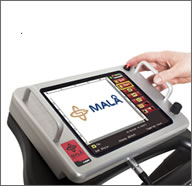HSG47 is a guide produced by the Health & Safety Executive which gives guidance on how to avoid danger from underground services.
Underground services can be anywhere. If you are carrying out work in a high street, it will be obvious that there are electricity cables, telephone cables, water pipes, and so on. There could also be gas pipes, fibre optics, and more. However, if you are going to carry out work down a small country lane it may be tempting to think that there is nothing there. You could very well be wrong, because there might be a large country house out of sight a quarter of a mile down that lane and it will have electricity, water, and telecoms and a sewer pipe at the very least.

This is why it is essential to carry out a survey using the correct tools before ever putting a spade into the ground. The figures are actually shocking: it is estimated that there are some 4 million groundworks carried out every year in the UK and these result in around 60,000 cable strikes, many of which cause severe injury, and of which a dozen or so are fatal.
This is why it is vital that anyone who needs to undertake surveys in order to locate underground services should first go on an HSG47 course that should cover every aspect of using the two main tools – the CAT and Genny – together with their limitations. That’s correct. As good as the CAT and Genny are, they do have certain limitations and it is essential to be aware of them.
For example, you might need to dig down three metres, so you dutifully use the CAT and Genny which tell you there is nothing there. However, what you may not know is that there is an electricity cable at 2.5 metres down, but which is too deep for the CAT and Genny to detect. There is a way to deal with that, but you need to know what it is.
Read More: HSG47 course
